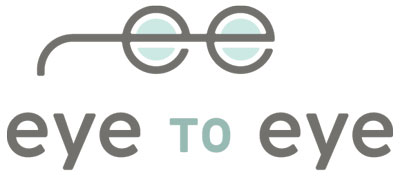Ways to Love Your Eyes on Valentine's Day
On Valentine’s Day, our thoughts turn to those we love — our significant others, our families, pets and friends. We think about how much we love and appreciate all these wonderful people and animals. But have you ever thought about how much you love and appreciate your eyes?
The eyes enable us to take in up to 80% of the information we gather from our environment through our sense of vision.
This Valentine’s Day, we present 8 ways to love your eyes today and all year through:
1. Limit Time Spent Staring at Screens
More than ever before, we’re spending hours each day using digital devices, including cell phones, tablets and laptops. But spending hours looking at these devices and the high-energy blue light waves they emit can cause eye fatigue and even damage the eyes over time. To minimize this damage, keep screens as far away from your eyes as possible. That’s 20 to 24 inches for your computer screen or tablet. In addition, practice the 20-20-20 rule: Take a break about every 20 minutes and look 20 feet away and focus on something at that distance for 20 seconds. You can also blink 20 times in a row to help prevent eye dryness. This break will help minimize eye fatigue.
2. Wear Sunglasses that Block 99-100% of Ultraviolet Rays
A lifetime of sun exposure can do damage to your eyes and also increases the risk that you’ll eventually develop conditions that impact your vision. These conditions include cataracts, eye cancer, age-related macular degeneration (AMD), and corneal inflammation or growths. Wear high-quality sunglasses that block 99-100% of both UVA and UVB rays. And wear them every day―winter, spring, summer and fall―because the sun’s damaging ultraviolet rays are present 365 days a year.
3. Wash Hands Before Touching Your Eyes
If the past 12 months have taught us anything, it’s the importance of washing our hands thoroughly and often. And if you’re a contact lens wearer, it’s even more important to wash hands thoroughly before touching your eyes and inserting your lenses. Both bacteria and other germs (yes, even viruses) can cause eye infections such as pink eye, and you could potentially introduce a virus into the body through your eyes.
4. Wear Proper Eye Protection For Every Activity
Whether you’re at work or enjoying leisure time skiing, playing sports, or maybe woodworking, cleaning with caustic chemicals, gardening or mowing the lawn, always think about how to properly protect your eyes. Sports goggles and impact-resistant safety goggles can help prevent up to 90% of eye injuries. Ask your optometrist what type of safety eyewear he or she recommends for the activities you and your family enjoy. Wear safety goggles or glasses consistently whenever you’re participating in those activities to protect your eyes from projectiles, dust, bacteria and injury!
5. Quit Smoking.
For your overall good health, if you’re a smoker, quit now! Smoking skyrockets your risk of multiple health conditions―including heart and lung disease, stroke, emphysema and COPD. Smoking can damage the optic nerve. In addition, smoking increases your risk for eye conditions that can hinder your vision, such as age-related macular degeneration and cataracts. Make 2022 the year you quit smoking for good.
6. Know Your Risk Factors.
Both age and family medical history are important to your ongoing eye health. The more birthdays you have, the more likely you are to develop age-related eye conditions. Eye diseases including glaucoma and retinitis pigmentosa have a genetic component, so it’s essential to know if any family members have (or had) them to determine your risk level. Do you know your risk factors?
7. Exercise and Maintain a Healthy Weight.
Exercise can help prevent or control high blood pressure, diabetes and high cholesterol, which can all contribute to serious vision problems. Watching your weight can prevent you from becoming overweight and increasing the risk of developing diabetes and diabetic eye disease. Get out there and move—walk, run, dance or garden—as often as you can!
8. Schedule a Comprehensive, Dilated Eye Exam
The American Optometric Association recommends for all adults age 18 to 64 to have a comprehensive eye exam at least every 24 months—more often if your optometrist advises. Many eye diseases don’t have warning signs but are controllable or treatable when caught in the early stages. Schedule a comprehensive eye exam at least every other year to keep seeing your best.





